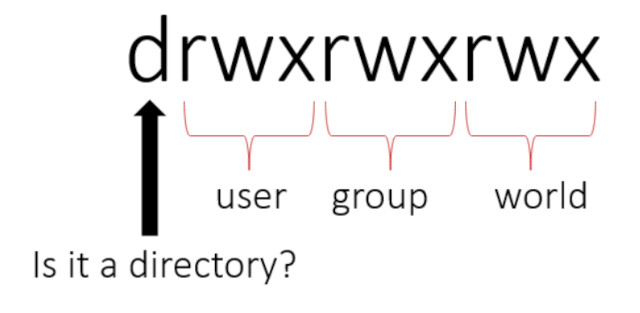UNDER CONSTRUCTION
The following will explain how to read the Linux command line ls or ‘list files’ command. This requires and understanding of linux file permissions.
List Files
When you open a Linux terminal you have the power of the command line at your disposal. One command is the ls command, stands for ‘list files’. To view the long listing of your files add the -l:
ls -l
The output will look as follows (figure 1):
Figure 1 – Terminal output of the linux command ls -l
Directory
The first character ‘Directory’ indicates if the name is a directory or a filename. d means it is a directory and ‘-‘ indicates its not a directory.
The name could also be a filename or a symbolic link. A symbolic link is a ‘shortcut’ to a file or directory.
Permissions
The next 9 characters define the permissions. File permissions can be changed using the chmod and chown commands.
File Count
Change Permissions
Permissions
The first character designates if the file is a directory the next 9 characters define the permissions of the file or directory.
User
Group
World
Owner

